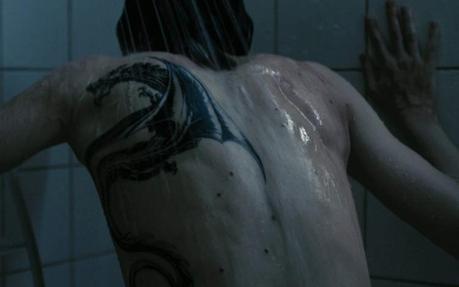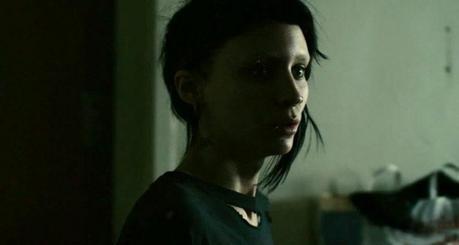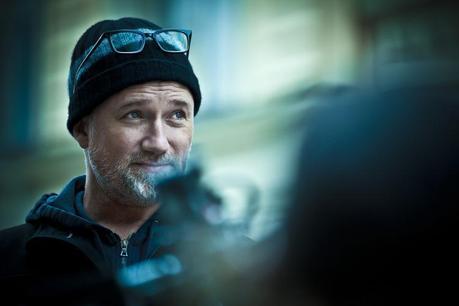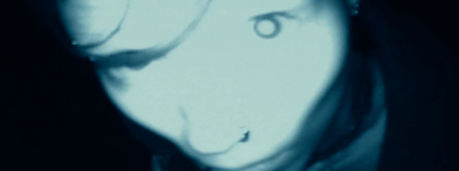“We must expect great innovations to transform the entire technique of the arts, thereby affecting artistic invention itself and perhaps even bringing about an amazing change in our very notion of art.” –Paul Valéry (PIÈCES SUR L’ART, “La Conquète de l’ubiquité,” Paris.)
“In principle a work of art has always been reproducible.” –Walter Benjamin (The Work of Art in the Age of Mechanical Reproduction)

I’ve begun to wonder something to which I have no answer. For the last number of months I have been in turmoil over the production of David Fincher’s The Girl with the Dragon Tattoo because it feels unnecessary. If you count the original Swedish television miniseries and the subsequent edited films as two separate entities, this is now the third adaptation of the same book in only a couple of years. The miniseries and re-cut films reached an appropriate mass audience and their renditions are quite spectacular precisely because they are imperfect. They present an attempt by human beings to translate, into a visual medium, words that registered to great masses.
Currently it would seem Hollywood is relying heavily on sequels, remakes, remakes not being called such and 3D upgrades of old product. Projects not in these designations still exist, but their numbers are far outweighed. I see a colonialist approach being taken to the remaking of non-US funded films that have any success because of the speed with which it is occurring. There is little time given for the material to really breathe on its own terms and in the race to make money there is an attempted erasure of sorts. Reference begins to take shape from the American version that is always classified as sleeker, more professional and better (at least by the Hollywood studio). In the case of Dragon Tattoo, this was all done in addition to it being “the feel bad movie of Christmas”. It ran on the gimmick of David Fincher being the one who could truly wring the violence out of this content.
This process is not new or extended to all successful films made without US funding. However, it does seem to have escalated in the past number of years. Maybe I had stars in my eyes as a child, but it seems there was a time when Hollywood was the envy of other countries and produced films that did more than stimulate and distract or piggy back on the successes of others.

It is within this relation that I surveyed the Dragon Tattoo material slowly originating from the low key marketing through secondary site mouth-taped-shut.com. Images, computer wallpaper spreads, short films here and there and advance snippets of music all came out over an extended period of time prior to any official trailer or marketing and has continued since. From the beginning this film has been about endlessly authentic aesthetically pleasant reproducibility.
After watching the film, I found myself fascinated. “Every book conceals a book,” according to Richard G. Stern and I would say the same is true for film. Fincher’s approach seems to know it is a copy. Rather than outdoing what has been done, its narrative feels aware of its own placement in the line of reproduction. This allows for alterations to ideas without difficulty and a score sounding at times more like the motors of industry rather than concert pieces. “We wanted to create the sound of coldness — emotionally and also physically…We wanted to take lots of acoustic instruments … and transplant them into a very inorganic setting, and dress the set around them with electronics.”
The music ruminates on ideas heavily. Many sequences sound like machine parts grinding together and are unearthly earthy. It’s brilliant as the backbone for the film’s sound design and speaks to the vanquished quality permeating every frame.
Fincher has stated all along that he made a very different film. He made a version of the story. There is a certain cleanliness and sterility to the production, down to Salander’s guardian making sure to use a condom to rape her and Martin sanitizing his hands prior to attempting murder. The violence is different, less immediately visceral. There is an absence of blood and life to it. Everything is about disconnection. And yet, connections between human beings are spoken of prominently and the importance these connections play on our lives is heavily weighted.

So did Fincher produce a narrative actively aware of itself as a copy? The film’s energy presents the idea. It is mechanical. Each frame feels manufactured and understood to be a step from the real, whatever the real may be, and within this setup it is possible the “[m]echanical reproduction…represents something new.”
“I know we are playing into the European, and certainly the Swedish, predisposition that this is a giant monetary land grab,” he told the fansite FincherFanatic.com. “You’re co-opting a phenomenon. Now, there are plenty of reasons to believe we can make it equally entertaining of a movie. But the resentment is already engendered…” Does this recognition lend credibility to the final creation concealing another narrative? Is it possible that the “film’s cold, almost robotic conception of Salander as a twitchy, anorexic waif,” is an active consideration of its own placement in the larger scene of artistic creations? Does it sense its own loss in a sea of reproductions?
Throughout this process I have clung to the idea of original beginnings. But, I no longer really know what that means. With immediate and constant availability everything is interwoven with the past and the future. New work is old work and builds the pieces upon them. To this end the idea of something that is not repackaging falls further and further away. “To an ever greater degree the work of art reproduced becomes the work of art designed for reproducibility.”
It was to be expected that Hollywood would put their stamp on the Millenium Trilogy. It has become part of the tradition. But it is the idea of tradition now being reproduction that complicates our connections and existence. “The uniqueness of a work of art is inseparable from its being imbedded in the fabric of tradition…the instant the criterion of authenticity ceases to be applicable to artistic production, the total function of art is reversed. Instead of being based on ritual, it begins to be based on another practice-politics.”

Fincher’s film seems self-aware as, “the technique of reproduction detaches the reproduced object from the domain of tradition”. It is a ghost of a once whole idea that has subsequently been broken down to minute fragments. Like one of the many images circulating through the site and subsequently used as the cover for the score’s album release, it’s an outline, a shell, without any of the details that give it a sense of humanity.
“During long periods of history, the mode of human sense perception changes with humanity’s entire mode existence. The manner in which human sense perception is organized, the medium in which it is accomplished, is determined not only by nature but by historical circumstances as well.” There may not have been any point to producing this version other than to capitalize on the times and a very valuable product. But, in doing so, Fincher may have created a narrative aware of itself without the proverbial wink to camera. Obviously I cannot confirm this idea, but that doesn’t matter. The magic of creation comes through the interaction with an audience and the allowance of variability. “For if we consent that what appears natural in art is actually constructed from a series of hidden postures, decisions, and influences, etc., we make ourselves eligible to weigh the notion that what’s taken as natural in our experience of everyday life could actually be a construction as well.”
Garrett D. Tiedemann 2/15/12
Find initial trailer here with the cover of Immigrant Song from the film’s soundtrack:
Quotes taken from the following:
The Work of Art in the Age of Mechanical Reproduction by Walter Benjamin
Trent Reznor Fresh Air Interview with Terry Gross:
http://www.wbur.org/npr/143834396/trent-reznor-the-fresh-air-interview
Movie review: ‘The Girl with the Dragon Tattoo’ is Too Frigid by Kenneth Turan (LA Times):
http://www.latimes.com/entertainment/news/movies/la-et-girl-with-the-dragon-tattoo-20111220,0,4091753.story

